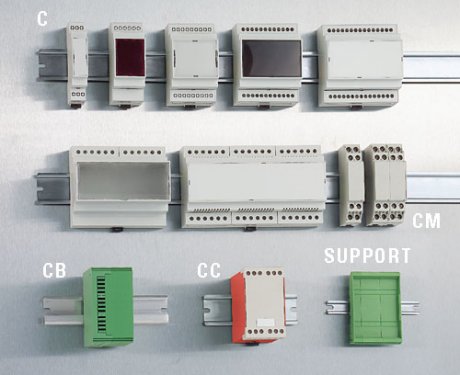Hi guys,
so I bought a handbag of components, and tried to put everything together. Result is not that bad - it works at least And when compared to RGBW, it's a HUGE improvement, also.
I'm reading a value from Analog Input #3 (10bit, 0-1023) every 5140ms.
Then I report it back as °C. HC2 is set to 10s polling
For example, an absolute value of 348 is transaled into 38,4°C, maximum value of 1023 will be reported as 102,3°C - which is nice.
As you can see on the chart, there's a lot of noise visible, but now it's okay for me. The chart shows a fluid level lowering, as I started pump to test the sensor.
1) For me, slow reading is not an issue, but for other applications this might be a problem. Especially if one wants to collect more samples over a short period of time and then calculate an average to eliminate spikes. Clearly, this ADC implementation is not meant for audio recording, of course.
2) I found the same issue. Even if I pull-down A0-A2 with resistors, there's a leakage between inputs. A0-A02 inputs are giving very similar values to the A3, where I have external voltage applied. I tried to put 1s delay before reading each input, but that didn't help either. (Now I wonder what would happen, if I read A3, then read A0, wait 1s and read A0 again...for a shame I cannot test it today...)
Anyway, it looks like a viable solution, so I will try to experiment with different pull-downs and capactitors for low-passes. Just to see, whether I'm practically limited to a single Analog Input per Z-Uno board, or not. Low impedance input buffer would be a sure solution, but I'd like to avoid of using more IC's, as much as possible.
One thing to add:
My watter-pressure sensor gives 10V for 6 meters of watter level. Height of my tank to the very top is 2,7m. That means that the maximal voltage I will ever get from the sensor is 4,5V.
Since Analog Input pins of Z-Uno are operating in range 0-3,3V, I have to lower the input voltage to be safe. For the start, I simply divided voltage by 2, using resistor divider.
To use the full scale, and still be safe, it would be better to divide by 1,5 (4,5 / 1.5 = 3V).
So, is it a good idea to use 10K+20K resistors for this? Plus a small capacitor as a low-pass?





